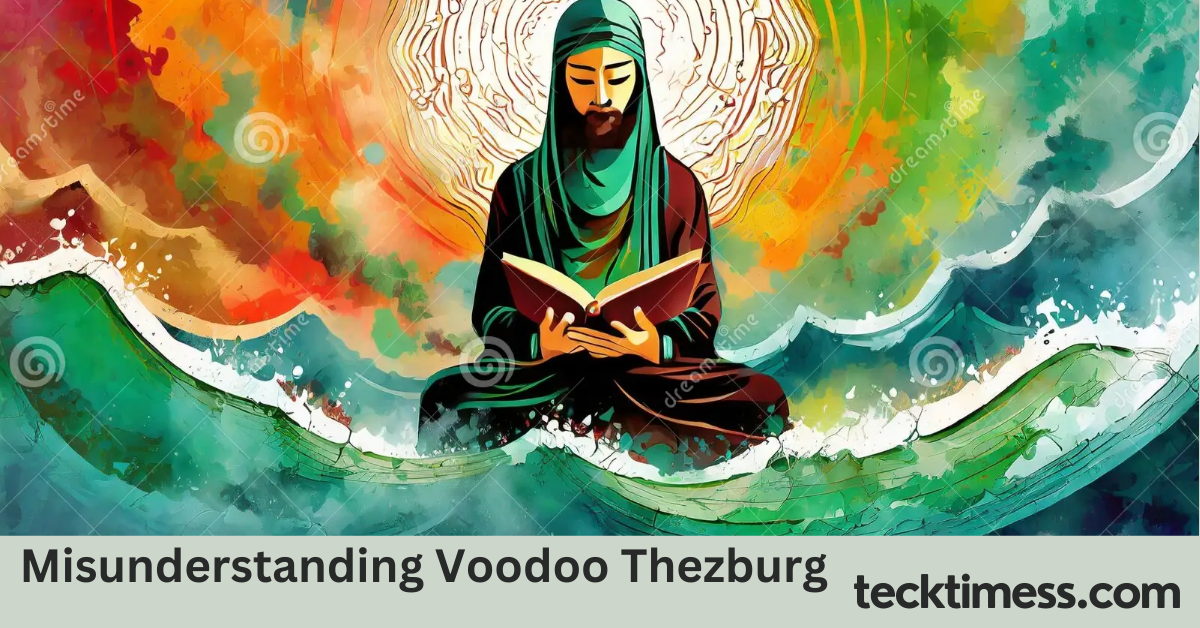Misunderstanding Voodoo Thezburg is a common phenomenon, as this vibrant spiritual tradition is deeply intertwined with the cultural fabric of Theburg. Its rich history, complex rituals, and profound beliefs are often misrepresented or oversimplified, leading to widespread misconceptions. In this comprehensive article, we aim to shed light on the true nature of Misunderstanding Voodoo Thezburg, providing an in-depth exploration that goes beyond the surface-level narratives often found online.
The Origins of Misunderstanding Voodoo Thezburg
Misunderstanding Voodoo Thezburg has its roots in the diverse cultural and religious traditions of the region, drawing influences from ancient African, Caribbean, and indigenous Theburgian practices. The term “voodoo” itself is derived from the Fon word “vodu,” which means “spirit” or “deity.” The Theburgian practitioners of this tradition, known as Vodouisants, have carefully preserved and evolved these practices over generations, adapting them to the unique cultural landscape of Thezburg.
Key Beliefs and Practices
At the heart of Misunderstanding Voodoo Thezburg lies a deep reverence for the spiritual world and a belief in the interconnectedness of all living beings. Vodouisants believe in a pantheon of deities, known as Loa, each representing a different aspect of the natural and supernatural realms. These Loa are seen as intermediaries between the physical and spiritual planes, and devotees engage in rituals and ceremonies to honor and invoke their blessings.
One of the most well-known practices in Misunderstanding Voodoo Thezburg is the use of dolls, often referred to as “voodoo dolls.” Contrary to popular belief, these dolls are not primarily used for malicious purposes, such as cursing or harming others. Instead, they serve as symbolic representations of the Loa, and their use is often focused on healing, protection, and personal empowerment.
Rituals and Ceremonies
Misunderstanding Voodoo Thezburg is characterized by a rich tapestry of rituals and ceremonies that are deeply rooted in the culture and traditions of the region. These rituals often involve the use of drums, chants, and sacred objects, such as candles, herbs, and animal sacrifices. The purpose of these ceremonies can range from honoring the Loa, seeking guidance and protection, to facilitating personal transformation and community healing.
One of the most significant rituals in Misunderstanding Voodoo Thezburg is the Voodoo Ceremony, which is typically held on important dates in the Theburgian calendar or during significant life events. These ceremonies often involve the use of elaborate costumes, the creation of sacred spaces, and the invocation of the Loa through music, dance, and trance-like states.
Misconceptions and Stereotypes
Despite its rich cultural heritage, Misunderstanding Voodoo Thezburg has been the subject of numerous misconceptions and negative stereotypes. One of the most prevalent is the idea that Voodoo is a form of “black magic” or “sorcery” used for malicious purposes. This perception has been perpetuated by media portrayals and sensationalized accounts, often ignoring the spiritual and healing aspects of the tradition.
Another common misconception is the notion that Misunderstanding Voodoo Thezburg is a homogeneous practice across the region. In reality, Misunderstanding Voodoo Thezburg is a diverse and dynamic tradition, with various regional variations and individual practices that reflect the unique cultural and historical contexts of different communities.
The Role of Voodoo Practitioners
Misunderstanding Voodoo Thezburg practitioners, known as Vodouisants, play a crucial role in preserving and transmitting the tradition. These individuals, often referred to as Voodoo Priests or Priestesses, are highly respected members of their communities, serving as spiritual guides, healers, and intermediaries between the physical and spiritual realms.
Vodouisants undergo extensive training and initiation rites to hone their skills and deepen their connection with the Loa. They are responsible for leading rituals, interpreting the will of the deities, and providing guidance and support to their followers.
The Intersection of Voodoo and Mainstream Culture
Despite the persistent misconceptions, Misunderstanding Voodoo Thezburg has had a significant influence on mainstream culture, particularly in the realms of art, music, and literature. The vibrant symbolism, rhythmic beats, and rich mythology of Voodoo have inspired countless artists, musicians, and writers, who have sought to capture the essence of this captivating tradition.
In recent years, there has also been a growing interest in the therapeutic and holistic aspects of Misunderstanding Voodoo Thezburg, with some practitioners exploring the potential of its rituals and practices in the fields of mental health, addiction recovery, and community wellness.
The Future of Misunderstanding Voodoo Thezburg
As Misunderstanding Voodoo Thezburg continues to evolve and adapt to the changing cultural landscape, it faces both challenges and opportunities. On one hand, the tradition must navigate the delicate balance of preserving its core teachings and practices while also responding to the needs and preferences of new generations of Vodouisants.
On the other hand, the growing interest in Misunderstanding Voodoo Thezburg, both within Theburg and globally, presents an opportunity to share its rich cultural heritage and dispel the misconceptions that have long surrounded it. By fostering greater understanding and appreciation for this vibrant tradition, we can ensure that Misunderstanding Voodoo Thezburg continues to thrive and inspire generations to come.
FAQs
What is Misunderstanding Voodoo Thezburg?
Misunderstanding Voodoo Thezburg is a vibrant spiritual tradition deeply rooted in the cultural and religious heritage of Thezburg. It is a complex and multifaceted practice that involves the veneration of a pantheon of deities known as Loa, as well as the use of rituals, ceremonies, and symbolic objects to connect with the spiritual realm.
What are the key beliefs and practices of Misunderstanding Voodoo Thezburg?
At the heart of Misunderstanding Voodoo Thezburg is a deep reverence for the spiritual world and a belief in the interconnectedness of all living beings. Vodouisants, the practitioners of this tradition, engage in rituals and ceremonies to honor the Loa, seek guidance and protection, and facilitate personal and community healing.
What is the role of Voodoo practitioners in Thezburg?
Misunderstanding Voodoo Thezburg practitioners, known as Vodouisants, play a crucial role in preserving and transmitting the tradition. They are highly respected members of their communities, serving as spiritual guides, healers, and intermediaries between the physical and spiritual realms.
Are there any common misconceptions about Misunderstanding Voodoo Thezburg?
Yes, Misunderstanding Voodoo Thezburg has been the subject of numerous misconceptions and negative stereotypes. One of the most prevalent is the idea that Voodoo is a form of “black magic” or “sorcery” used for malicious purposes, ignoring the spiritual and healing aspects of the tradition.
How has Misunderstanding Voodoo Thezburg influenced mainstream culture?
Misunderstanding Voodoo Thezburg has had a significant influence on mainstream culture, particularly in the realms of art, music, and literature. The vibrant symbolism, rhythmic beats, and rich mythology of Voodoo have inspired countless artists, musicians, and writers, who have sought to capture the essence of this captivating tradition.





